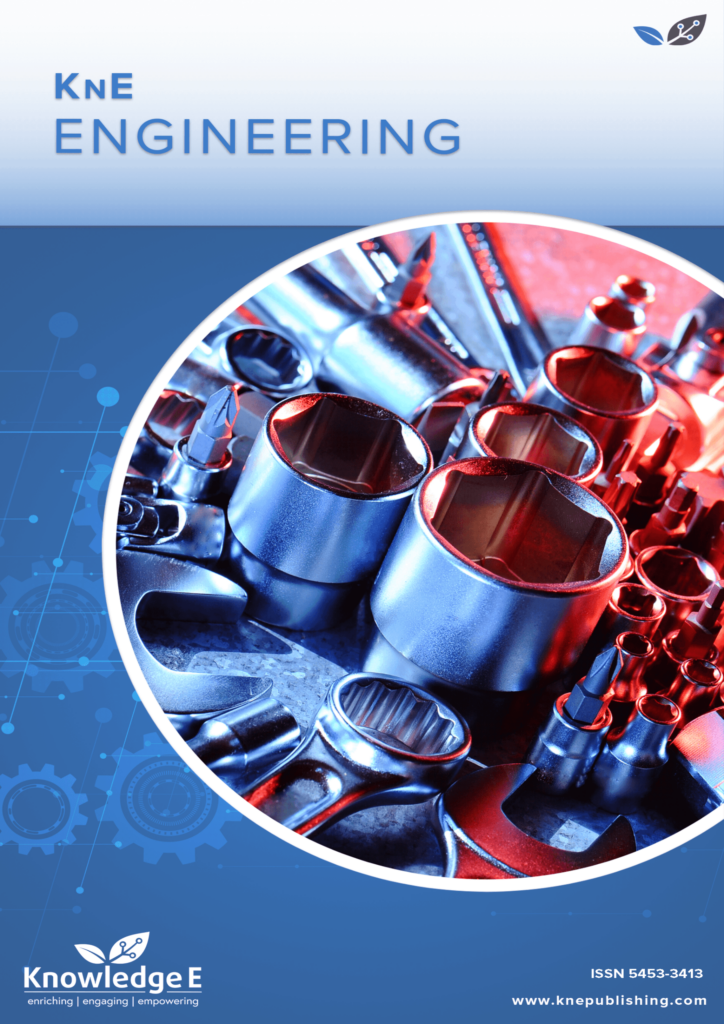
KnE Engineering
ISSN: 2518-6841
The latest conference proceedings on all fields of engineering.
Use of Industrial Waste for the Optimization of Ceramic Construction Materials
Published date: Apr 13 2020
Journal Title: KnE Engineering
Issue title: REMINE International Conference on Valorization of Mining and Industrial Wastes into Construction Materials By Alkali-activation
Pages: 36–48
Authors:
Abstract:
The massive growth of the ceramic industry and the consequent demand for construction materials worldwide has motivated the search for alternative solutions aimed at reducing the use of mineral / natural resources as the main source of raw materials. One of the strategies frequently adopted by the scientific community is the reuse of industrial waste. It is beneficial not only to reduce the overexploitation of mineral resources but also to reduce the environmental, economic and social impacts resulting from their incorrect disposal/treatment and consequent deposition on land unsuitable or that purpose. Duetoconsiderationssuchasphysico-mechanical characteristics and the high production rate, two different types of industrial waste were selected for this work, ashes resulting from the burning of coal in thermoelectric power plant, commonly known as bottom ash (B), and the Marble Powder (MP). It was intended to test the technological feasibility of the manufacture of ceramic materials produced from clay mixtures containing these two residues. For this purpose, the fine fraction(<63μm)obtained from the sieving of the marbleresidue(MR)and slag(Bf)was used,aswellasacoarsergrainslagfractionrangingfrom63-125μm(Bg). The resulting test samples were subjected to a firing of 950 °C under an oxidizing atmosphere, following a primary drying process. Faced with the standard values, the new ceramic materials obtained from MP have seen their mechanical and porous characteristics decrease and increase, respectively. Atthesametime,althoughtheadditionofBinno way influenced the mechanical characteristics,a significant improvement the porous characteristic was observed. The incorporation of these residues produced a color very close to the original sample material.
Keywords: industrial waste, ceramic, construction materials, bottom ash, Marble Powder
References:
[1] Sena da Fonseca, B., Galhano, C., and Vilão A. (2013). Utilization of Estremoz marbles sawing sludge in ceramic industry - preliminary approach. Civil Environ. Res., vol. 3, issue 9, pp. 68-74.
[2] Sena da Fonseca, B., Galhano, C., Vilão A. and Simão, J. A. R. (2014). Reusing coffee waste in manufacture of ceramics or construction, Advances in Applied Ceramics,vol.113,issue3,pp.159-166.
[3] MenezesR.R.,et al.(2005).Useofgranitesawingwastesintheproductionofceramicbricksandtiles. J. Eur. Ceram. Soc., vol. 25, issue 7, pp. 1149–1158.
[4] Hojamberdiev,M.,Eminov,A.andXu,Y.(2011).Utilizationofmuscovitegranitewasteinthemanufacture of ceramic tiles. Ceram. Int., vol. 37, issue 3, pp. 871–876.
[5] Kaza, S., et al. (2018). What a Waste 2.0: A Global Snapshot of Solid Waste Management to 2050. (Washington, DC: World Bank).
[6] Vinai,R.,etal.(2013).Coalcombustionresiduesvalorisation:researchanddevelopmentoncompressed brick production. Constr. Build. Mater., vol. 40, pp. 1088-1096.
[7] ACIMAC – Associazione Costruttori Italiani Macchine Attrezzature per Ceramica / MECS – Machinery Economic Studies (2017) – World Production and Consumption of Ceramic Tiles – V Edition, TILE EDIZIONI, Italy, Year 27 (123), pp. 56-70.
[8] Seixas,D.(2014).Desempenho e Durabilidade de Cerâmicos de Construção Fabricados com Misturas de Argila Comum e Resíduos de Centrais Termoelétricas. (Relatório PIIC – FCT – UNL).